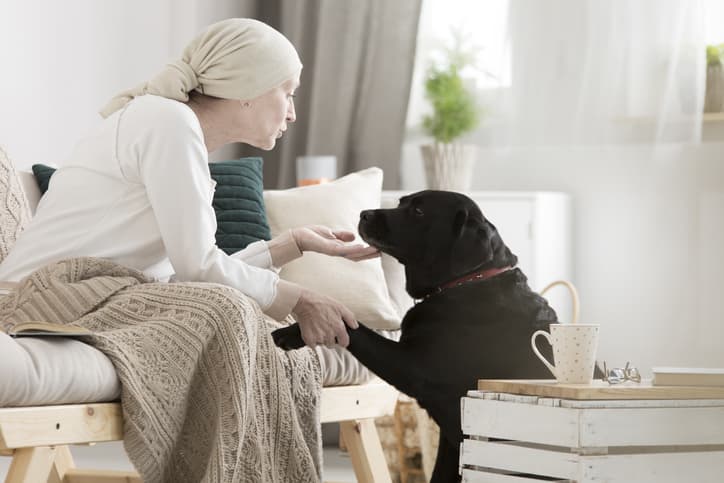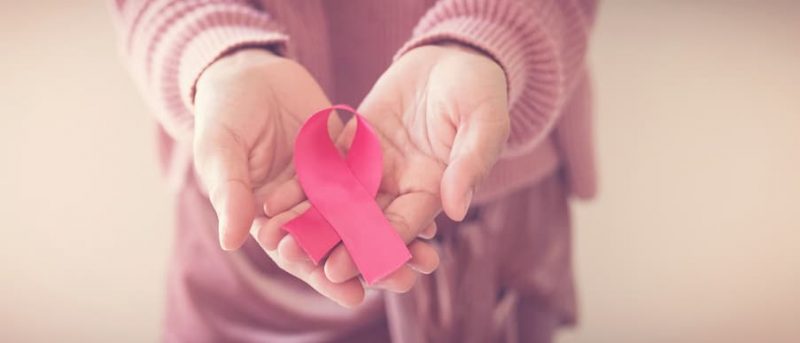One in eight women in the United States will be diagnosed with breast cancer at some point in their lives, according to the American Cancer Society. Breast cancer is the second most deadly cancer for women, but the death rate went down by 1% every year between 2013 and 2018. The cause of this is thought to be due to better treatments, early detection, and, ultimately, better breast cancer awareness. This highlights breast cancer awareness month’s ability to potentially save even more lives.
When is breast cancer awareness month?
According to the Mayo Clinic, breast cancer awareness month is October. The goal of breast cancer awareness month is to raise funds for research and screenings and to bring awareness about preventing breast cancer.
What is breast cancer?

To understand breast cancer, you must first understand cancer itself. According to The American Cancer Society, the human body consists of trillions of cells that replicate as needed. All cells have a specific function (skin cells, cells that make up the immune system, red blood cells to oxygenate your blood, etc.). Normally, when a cell becomes damaged, the body kills that cell before it creates problems. Cancer occurs when damaged cells don’t die, and cancer cells replicate too fast. This causes the healthy cells to become overwhelmed by cancer cells.
According to The American Cancer Society, breast cancer is when cancer develops specifically in one or both breasts. Breast cancer can begin in multiple parts of the breast(s), such as:
- The lobules — the glands responsible for milk production.
- The ducts — the tubes that carry milk to the nipples. This is the most common place for breast cancer to start.
- The stroma — the fat and connective tissues.
- The blood vessels.
- The lymph vessels.
- The areola — the darker skin surrounding the nipple(s).
- The nipple(s).
Early diagnosis of breast cancer is vital due to its proximity to the lymph system. If cancer cells reach the lymph system and/or the bloodstream, they can metastasize (spread) to other parts of the body leading to cancer there as well.
What puts you at risk for developing breast cancer?

Because everyone has risk factors (especially if you were born female), you should follow screening guidelines and let your doctor know your risk factors. According to the Centers for Disease Control and Prevention (CDC), risk factors that are beyond your control include:
- Being female.
- Age — the majority of breast cancer cases are diagnosed after 50.
- A menstrual cycle starting before age 12 and/or ending before age 55 increases chances.
- Having “dense” breasts.
- A family history of breast cancer.
- Genetic mutations — people (especially women) who have inherited the BRCA1 and BRCA2 genes are at an increased risk of developing breast cancer.
- Exposure to diethylstilbestrol (DES) either in the womb or having taken it yourself (DES is a drug used between 1940-1971 to prevent miscarriages).
- Previous breast cancer diagnosis.
- Previous diagnosis of atypical hyperplasia or lobular carcinoma in the breast.
- Radiation therapy.
Risk factors you can control:
- Being overweight.
- A sedentary lifestyle.
- Drinking too much alcohol.
- Not breastfeeding.
- Waiting until after 30 to get pregnant for the first time.
- Never having a full-term pregnancy.
- Taking hormones (during menopause or birth control pills).
- A lump in the breast(s).
The American Cancer Society emphasizes that benign (non-cancerous) lumps are common and not life-threatening. However, they can increase your risk of developing breast cancer in the future.
Yes, men can get breast cancer too.
While breast cancer is significantly less common in men, it still happens due to the fact that men also have breast tissue and can also carry genetic risk factors. According to The American Cancer Society, approximately one in 833 men are at risk of getting breast cancer at some point in their lives. The risk factors for breast cancer are roughly the same for men and women (with the exceptions of menstruation, pregnancy-related causes, and breastfeeding having no effect on males).
According to the Mayo Clinic, in addition to all the risk factors that men share with women, risk factors specific to men include:
- Exposure to estrogen that’s found in some drug treatments.
- Liver disease.
- Klinefelter’s syndrome.
- Certain testicular diseases or surgeries.
What are the symptoms of breast cancer?
According to the CDC, everyone’s breasts are a little different, so it’s important to know what’s normal for you. Most breasts will fluctuate over time due to hormone changes (especially due to menstruation and pregnancy), weight fluctuations, certain medications, and age.
However, there are some things everyone should be looking out for:
- A lump in the breast or armpit.
- Uneven swelling.
- Dimpling.
- Redness or flakey skin around the nipples.
- If the nipple(s) seem to be going inside themselves.
- Nipple irritation.
- Abnormal breast pain or irritation.
- Any fluid that isn’t breast milk.
- Sudden changes in size/shape.
The best thing to do to prevent breast cancer is to get a mammogram.

A mammogram is essentially an x-ray of your breasts that can show early signs of breast cancer. According to the Cleveland Clinic, mammograms are the best way to detect breast cancer early and increase your chance of surviving a breast cancer diagnosis. While getting a mammogram can be scary, the Cleveland Clinic reassures us that most lumps and abnormalities found during mammograms are benign (non-cancerous). In fact, less than one in ten people that require additional testing actually have cancer.
Women without additional risk factors should begin getting mammograms at 40. If you’re a female with additional risk factors, talk to your doctor about when you need to start getting mammograms. Men with family history and/or the presence of genetic mutations should consult their doctor if a mammogram is possible.
This October, during breast cancer awareness month, celebrate by spreading lifesaving information and participating in a pink day. Then be sure to talk to your doctor about when you should start your breast cancer screenings.
Citations:
Key Statistics for Breast Cancer. (2022).
Key Statistics for Breast Cancer in Men. (2022).
Male breast cancer. (2020).
Mammogram. (2022).
O’Harra, J., (2019). Breast Cancer Awareness Month.
What Are the Risk Factors for Breast Cancer?. (2021).
What Are the Symptoms of Breast Cancer?. (2021).
What is Breast Cancer?. (2021).
What is Cancer?. (2022).